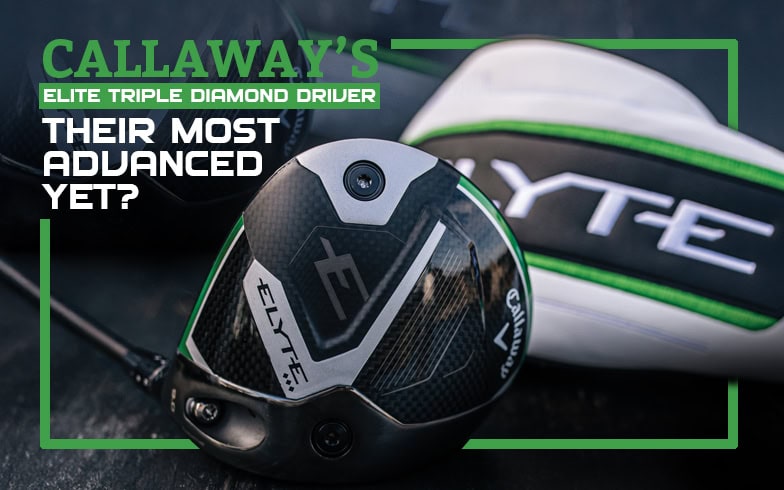Callaway’s R&D department were given a bold brief for 2025: make a great driver genuinely elite. Their response? The Elyte range and specifically, the Triple Diamond model, which blends Tour-proven performance with update tech.
Unlike previous generations, this isn’t just a subtle tweak of an existing head. This is a ground-up redesign that, according to Callaway, benefitted from more tech investment than any driver in their history, including a £1.6 million 3D printer to fast-track over 75 prototypes during development. The result? A tour-calibre driver with advanced materials, improved aerodynamics, and impressive customisation options, all aimed at the stronger player who demands workability and a little more forgiveness.
The Engine Room
The Triple Diamond head maintains a compact 450cc profile and neutral face angle that will appeal to low-handicap golfers and faster swingers. One of the key changes from the previous Paradym Triple Diamond is the use of Thermoforged Carbon in the crown and sole – a new aerospace-grade composite that wraps around the chassis to lower the centre of gravity and improve energy transfer at impact.
Paired with the latest Ai Smart Face 10X – designed using real player data to improve ball speed retention across the face – the Triple Diamond aims to offer a hot, controlled launch with more consistent spin rates, especially on mis-hits low on the face.
Aerodynamically, Callaway say the new shape has reduced drag by 15% versus the Ai Smoke TD.
Look, Sound & Feel – 4/5
It has a glossy crown compared to the matte head of the standard and X models, which I don’t prefer, as the bright sunlight in the UAE does glare off the crown. Though, the head comes without the chevron which looks cleaner and less distracting.
Performance: Distance & Spin – 5/5
On the launch monitor, the Elite Triple Diamond impressed. As you would expect with a low spin driver if you match it with speed and close to 14 degrees of launch they go for miles and this is a missile launcher. With an average swing speed of 108mph I was carrying close to 265 yards and running out to around 290 yards.
Tough the big surprise was how consistent the spin was on off-centre hits. Traditionally, low-spin drivers tend to punish anything not struck out the middle – but thanks to the Ai10x face, even slight low heel misses carried further and straighter than expected.
Forgiveness & Workability – 4.5/5
This is where the Triple Diamond has quietly evolved. It’s still the most demanding head in the Elyte family – but it’s noticeably more stable than its predecessors. Three repositionable sole weights (front, back, and toe) allow fine-tuning of spin, launch, and shot shape.
Callaway claim up to 20 yards of lateral shot bias adjustment depending on weight settings – in testing, I saw about 10 yards, which is plenty to dial in a fade or neutralise a hook. The rear weight also gives you flexibility to bump up launch and MOI slightly, without losing the head’s core identity.
Customisation – 5/5
The Elyte TD comes with Callaway’s OptiFit hosel, offering up to 2° of loft and lie adjustment.
Aesthetically, it might not be the flashiest club on the shelf – but it’s built for those who care more about numbers than noise. From a tech perspective, it’s difficult to fault. The use of AI in face design, enhanced carbon materials, and smart shaping all combine to deliver a Tour-style driver that’s more playable than ever.
Verdict:
If you’re a confident driver of the ball looking to maximise speed without sacrificing control, the Callaway Elyte Triple Diamond is a serious contender. With smart tech upgrades, improved aerodynamics, and a refined feel, it offers everything the better player demands and a little more forgiveness than you might expect.
For those who can swing it, the Elyte TD might just be Callaway’s best driver yet.
Overall Score: 4.7/5
















